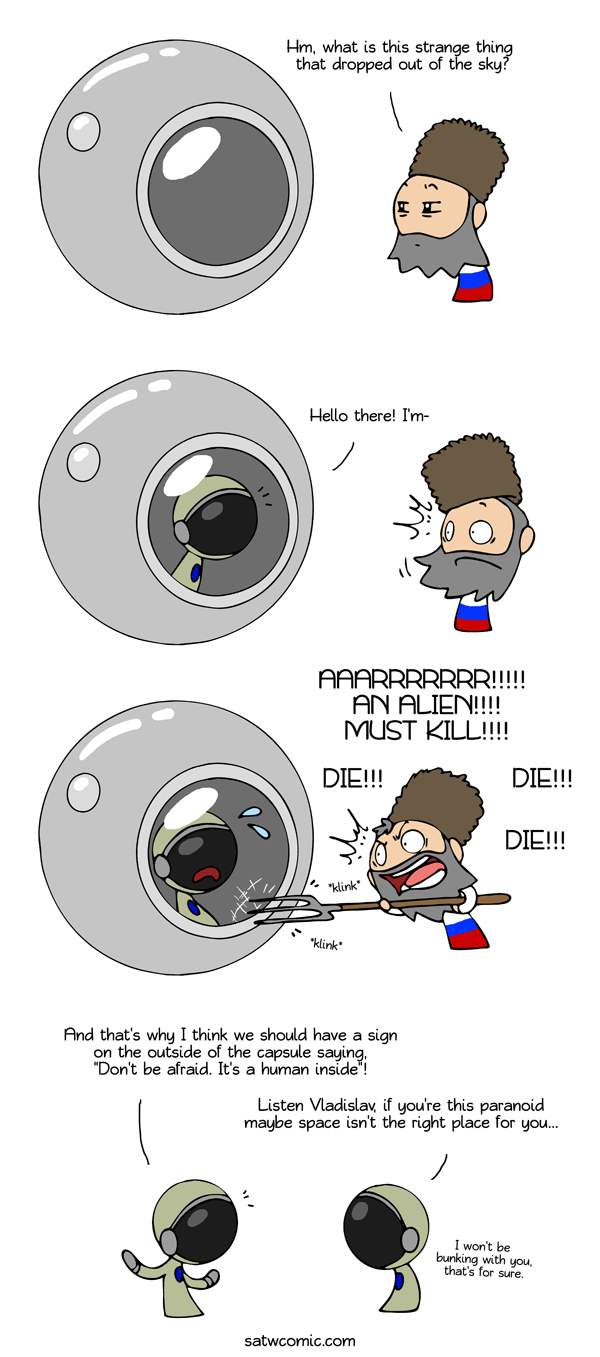
Space Attack!
Early Russian space capsules had text on the outside telling people not to be afraid, it's just a human inside, because they feared people's reactions.
Russia
23rd September 2016
9 years ago #9534773
8
0
Channeling Groundskeeper Willie...
"Its an alien! Kill it!"
"Awww, its a human... Kill it! KILL IT!"
"Its an alien! Kill it!"
"Awww, its a human... Kill it! KILL IT!"
9 years ago #9534742
8
0
Considering that after the USSR fell apart there were parts of Russia that didn't know that the Tzar had been overthrown, and these were the parts of Russia that the space capsules were going to land in, this was not an unrealistic fear.
9 years ago #9632762
6
0
Alien: We came with peace
Russian: Die!!!!!
Alien: We brought vodka
Russian: If you really came with peace maybe stay a little bit

Russian: Die!!!!!
Alien: We brought vodka
Russian: If you really came with peace maybe stay a little bit
9 years ago #9534643
6
0
Sounds out of this world... Hah, get it, because they came from space! ...I'll find the door myself...
9 years ago #9535853
4
0
Another thing,; To avoid injury, the cosmonaut escaped with an ejecton seat before the capsule landed with a hard, heavy thud. American capsules made relativeloy soft landings in the sea.
9 years ago #9534766
4
0
"don't worry. Human inside."
That's exactly what an alien would say! KILL IT!
That's exactly what an alien would say! KILL IT!
9 years ago #9598070
3
0
I don't know how much I'd trust a sign that said "don't be afraid, there's humans inside".
9 years ago #9536078
3
0
It is very likely that the average Soviet citizen would be surprised considering that the only people who would know of an active Soviet space mission were the cosmonauts, the launch crew, and a few politicos. And NASA who would detect the launch and track the spacecraft. The Soviet public would only find out about a mission once/if it was successful.
Add comment: Please Sign in or create an accout to comment.



 Support the comic on
Support the comic on 







































26